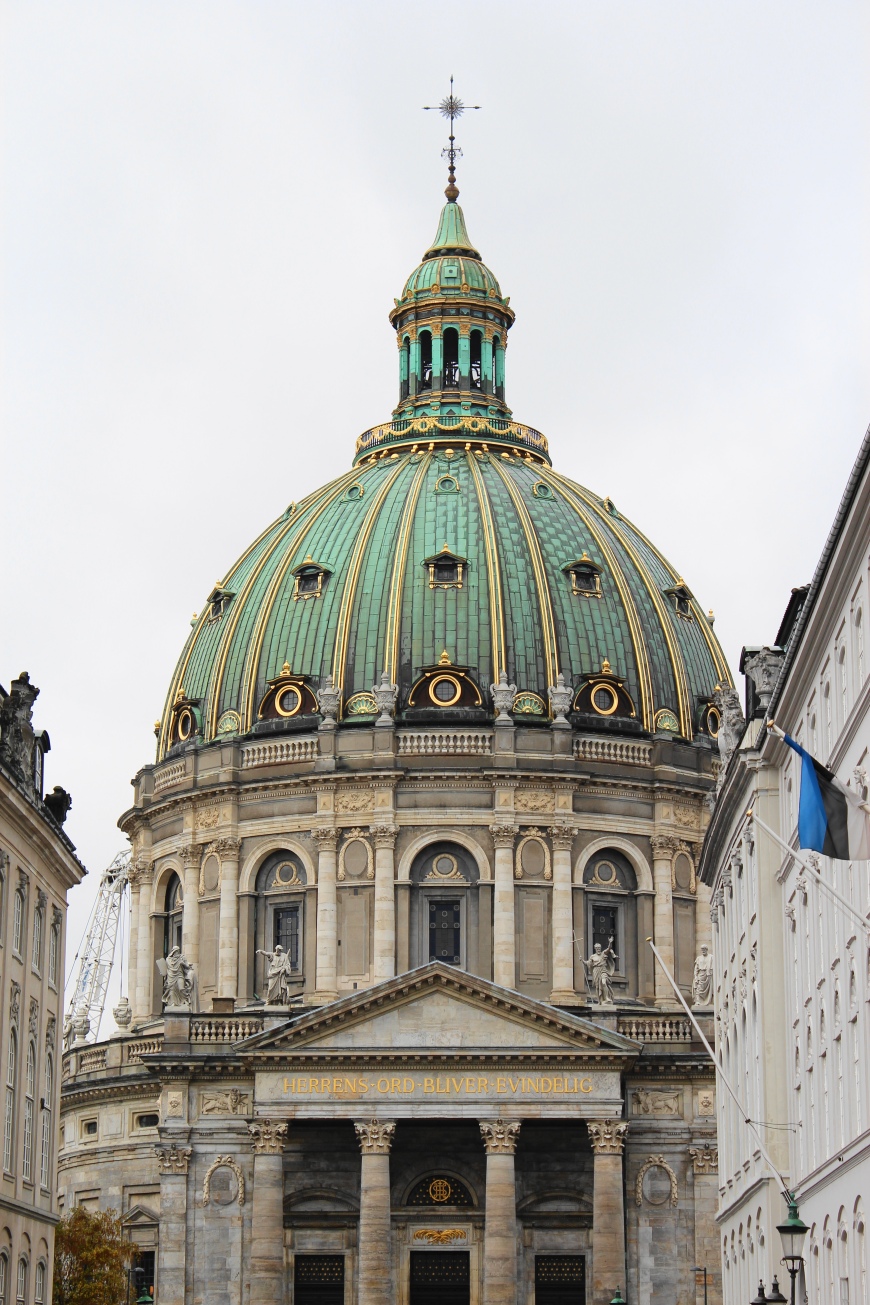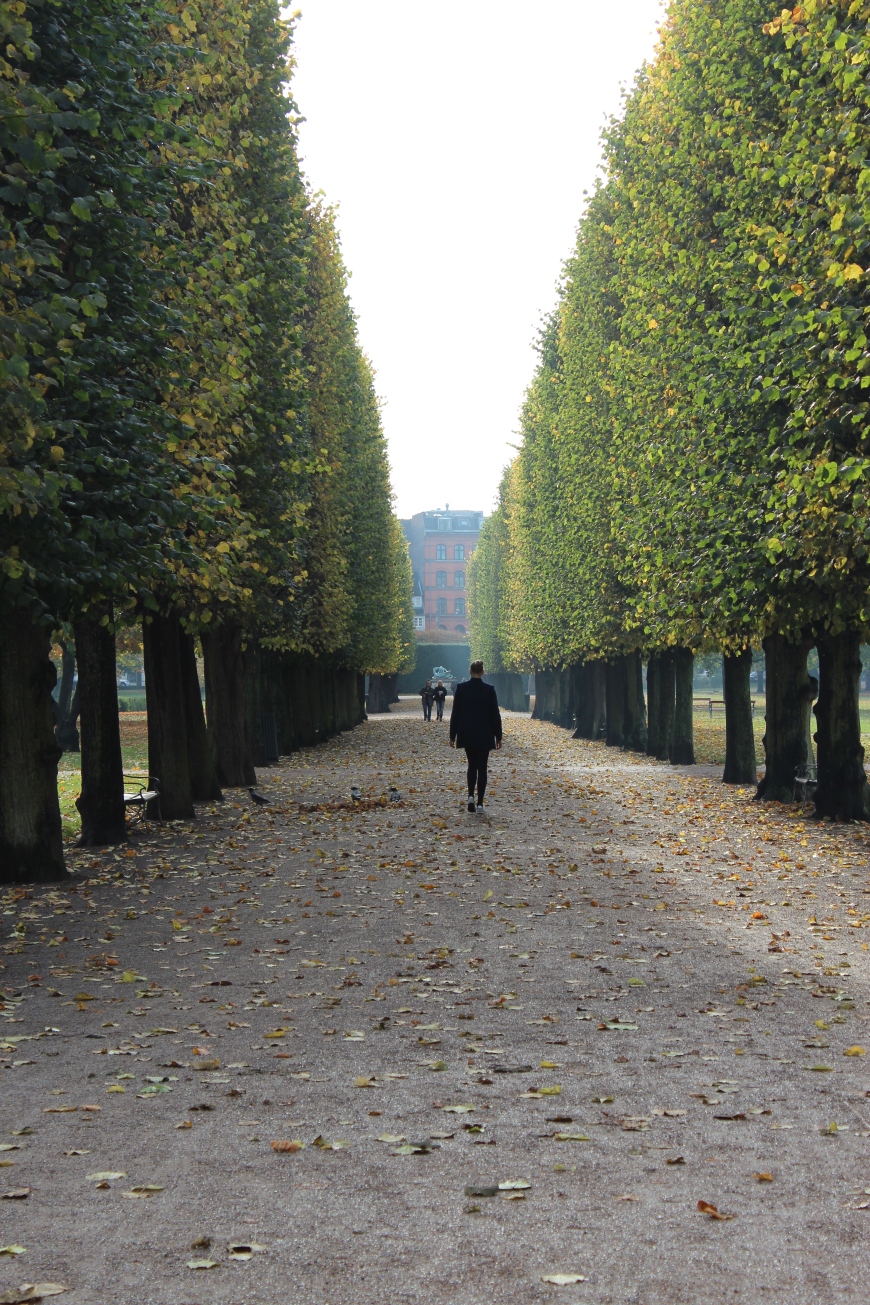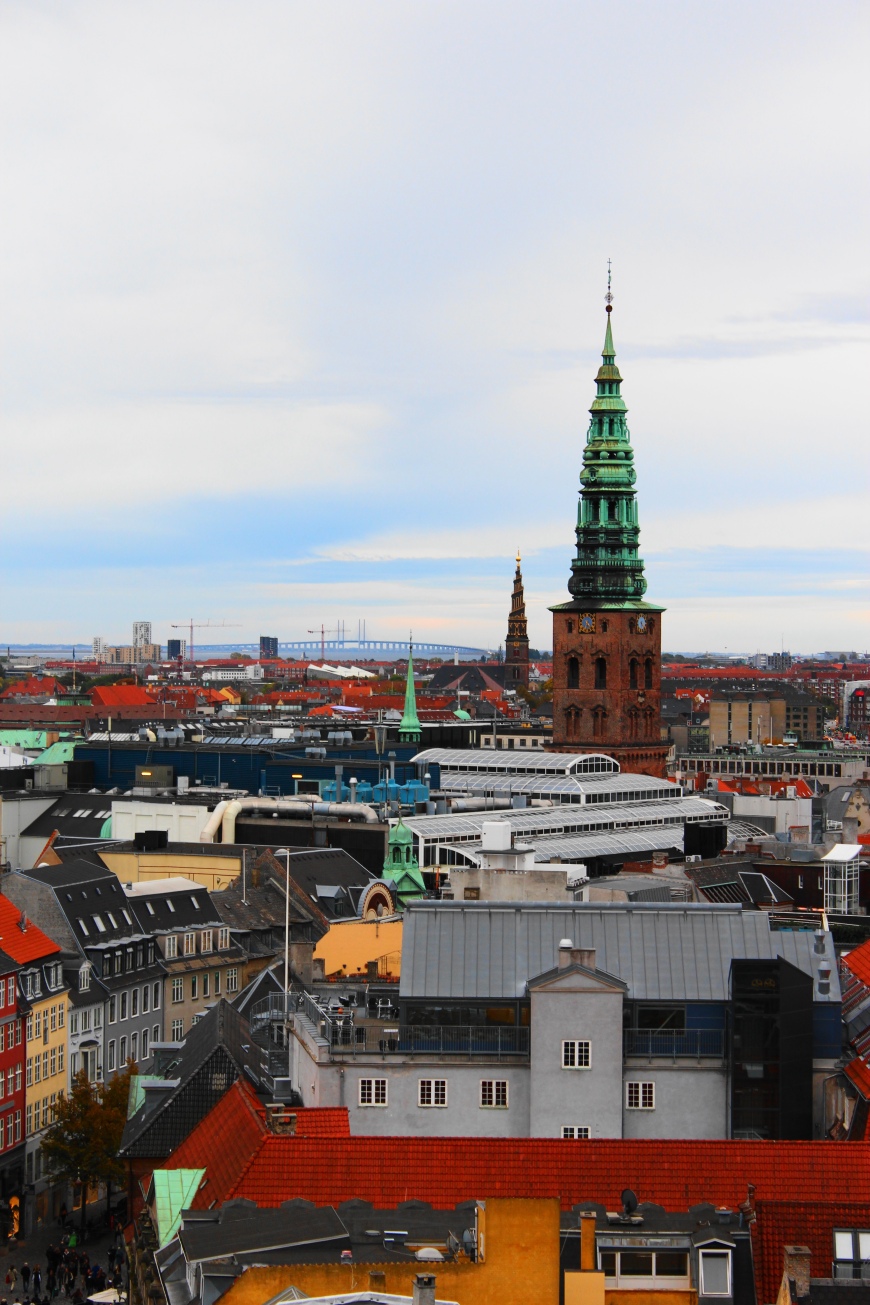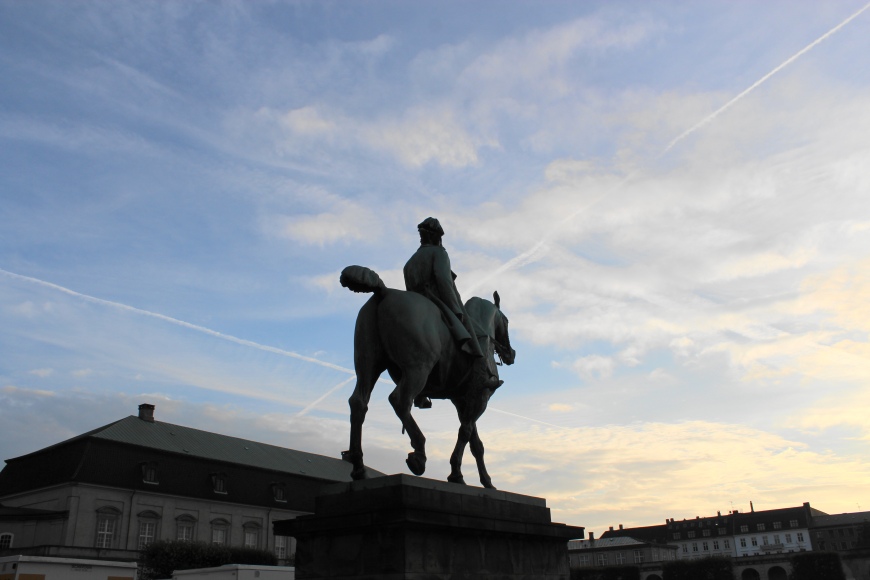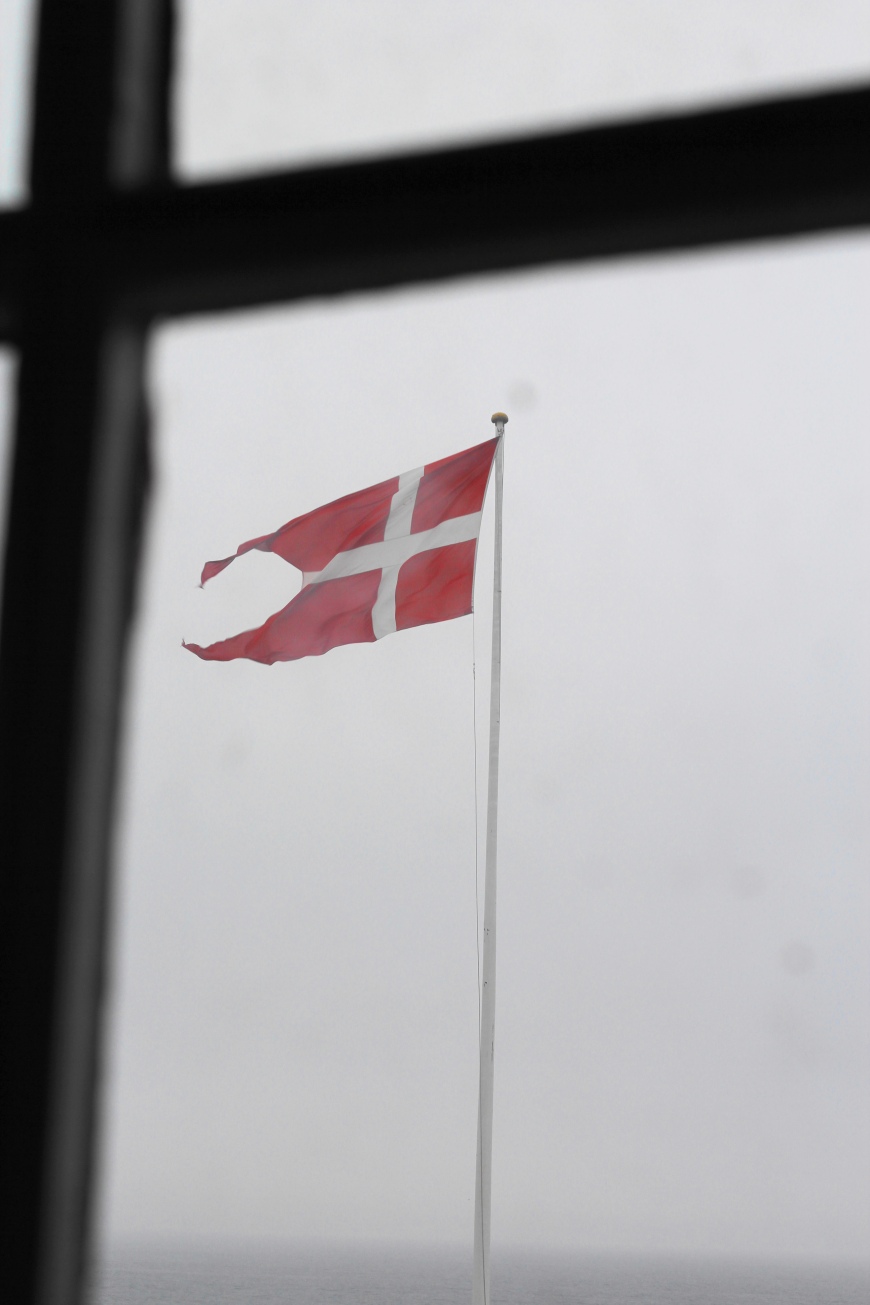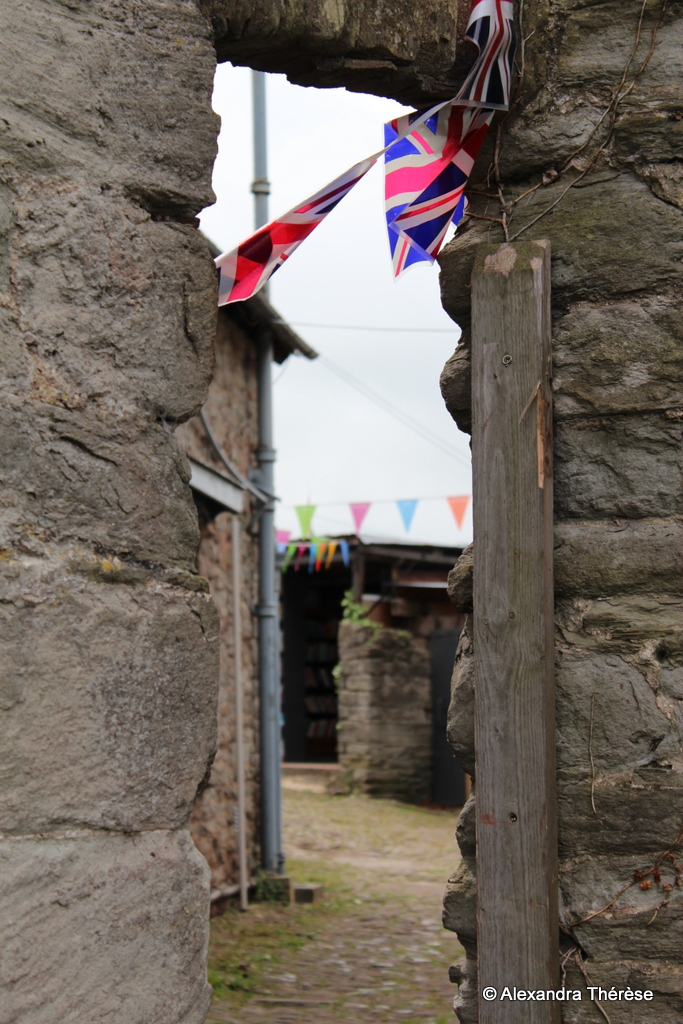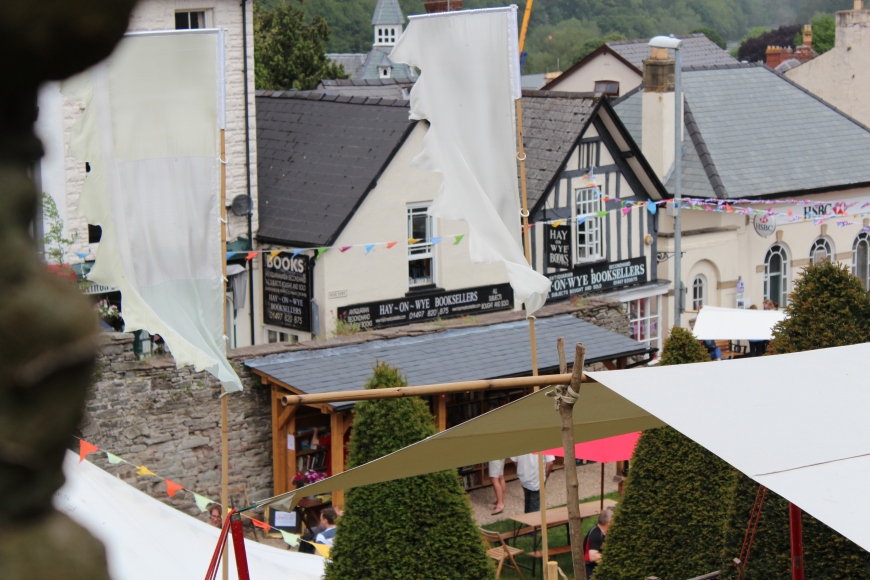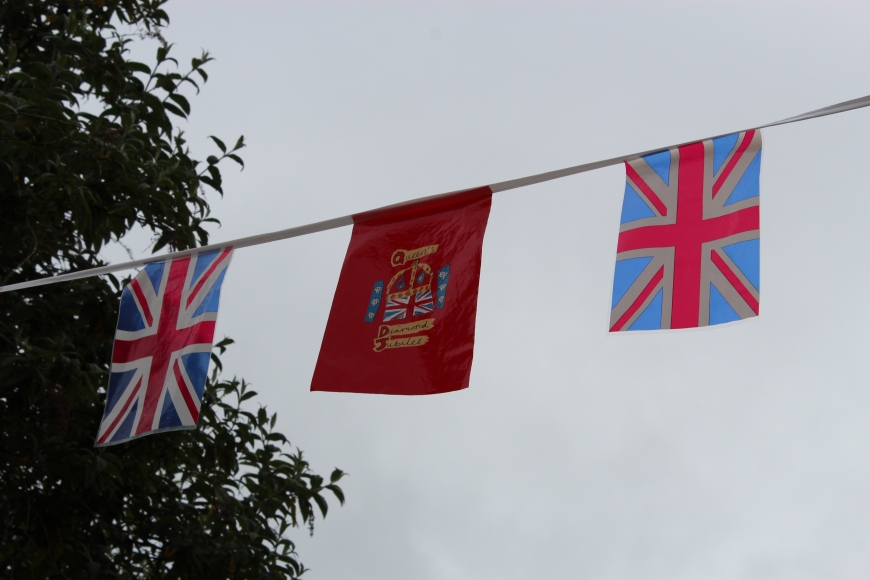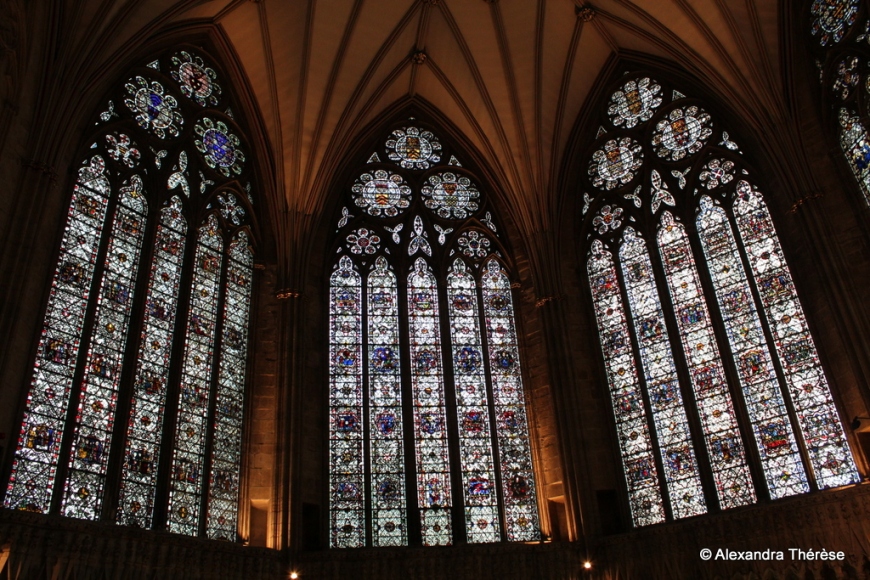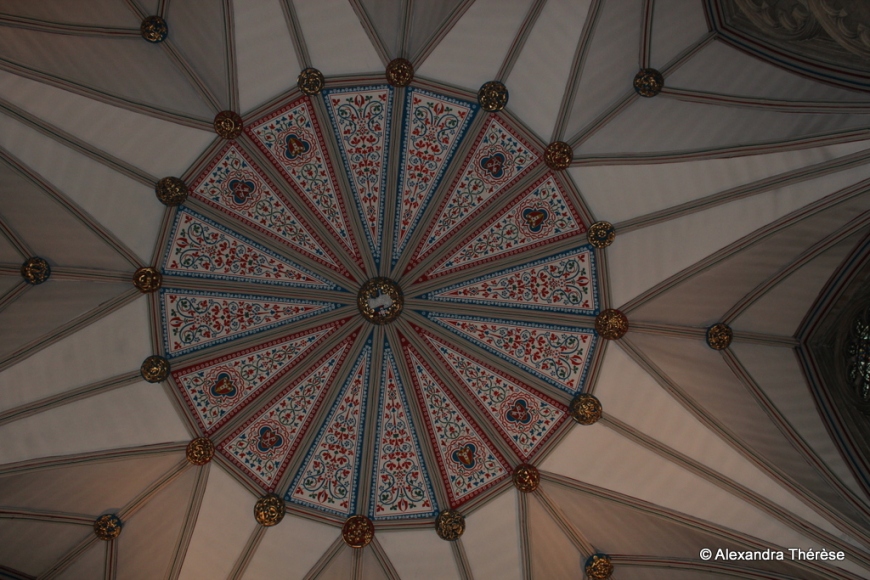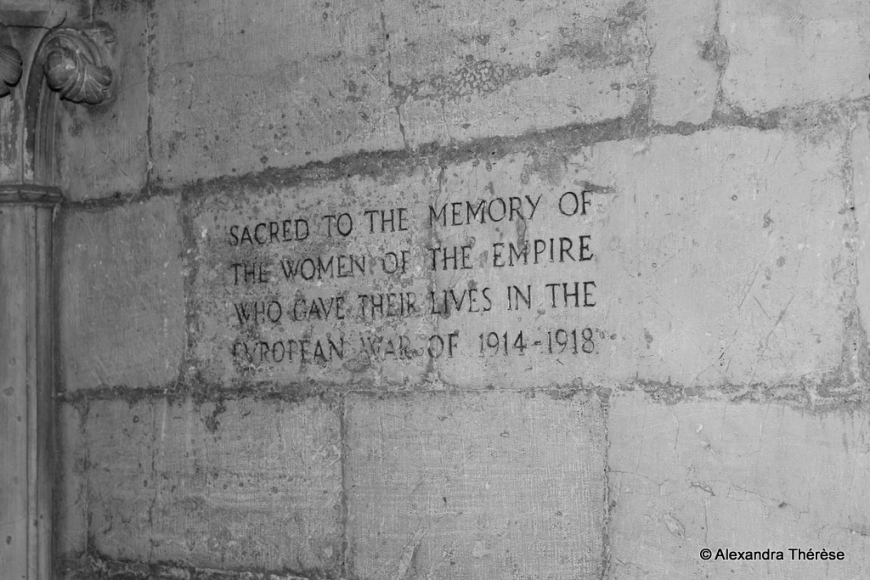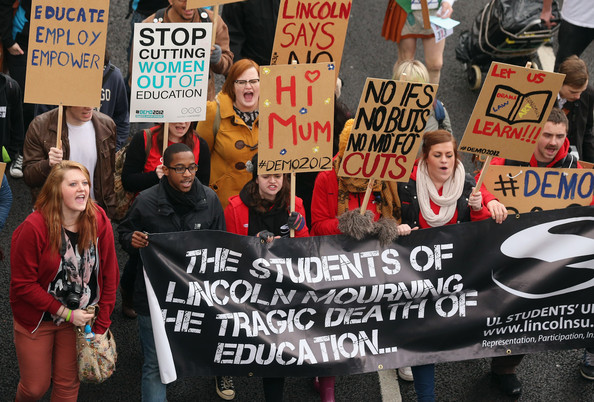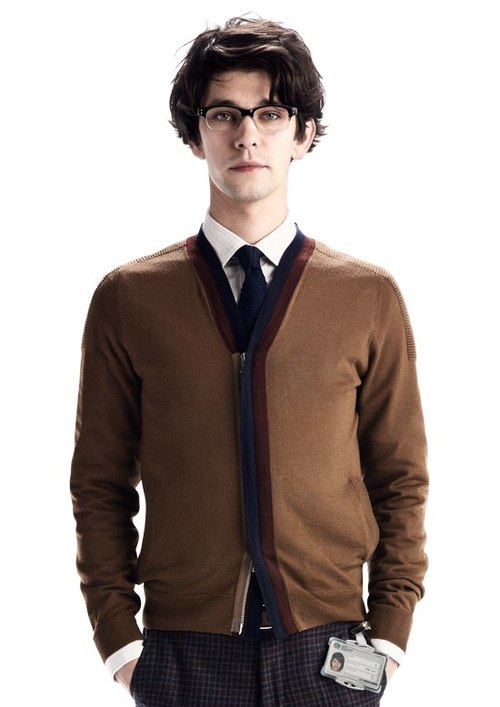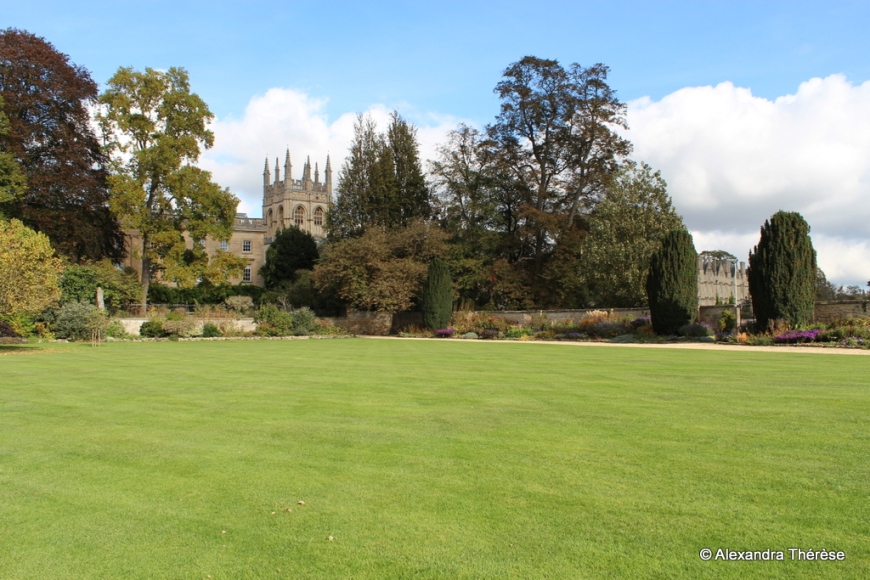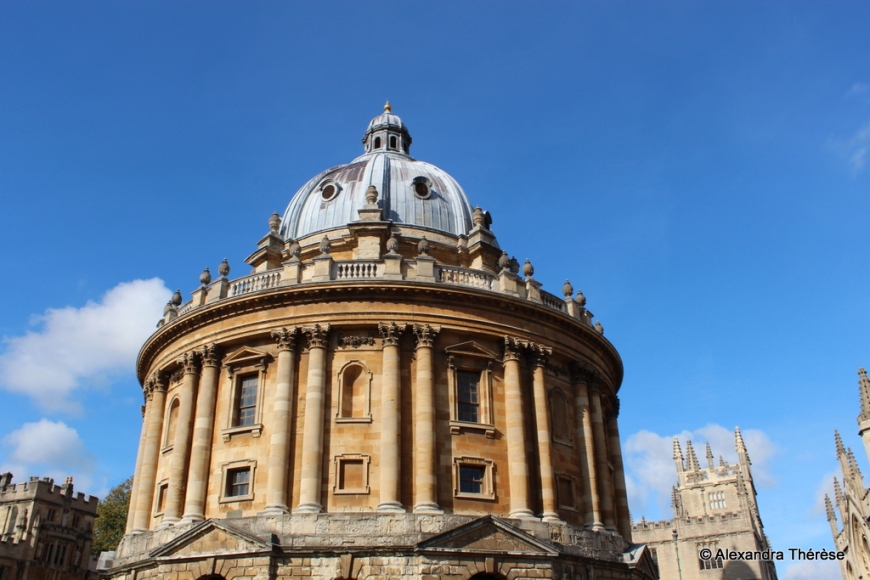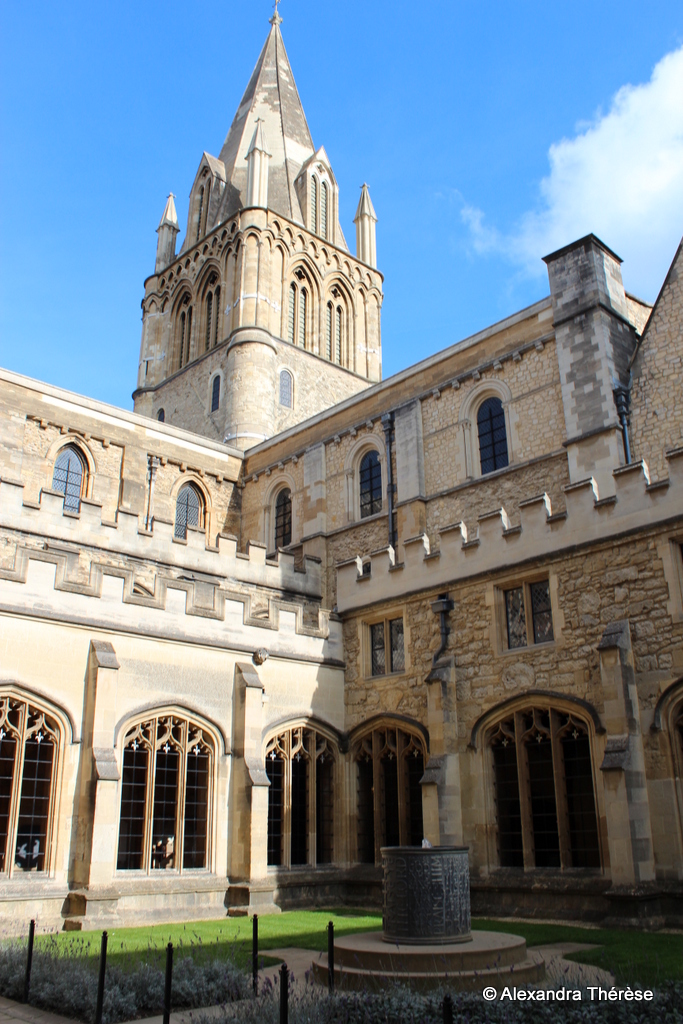After a year-long hiatus I have found myself returning to the bare white page of a blank new post. My reason is Copenhagen. I visited in the Autumn; a truly brilliant birthday present I was surprised with only two weeks before I was due to fly out. The city itself is a collision of old and new, where 17th century landmarks jostle for competition next to modern bank buildings. The Copenhagen Opera House (in Danish, the Operaen) is the national opera house of Denmark and one of the most modern in the world, having been completed in October 2004 at a cost of over 500 million US dollars. The Church of St Petri, however, boasts a tower and central nave that date back to the 16th century and is considered to be the oldest preserved building in Copenhagen’s inner city. This architectural collision isn’t unusual – you only need to see a single aerial shot of London to show you that – but it is part of Copenhagen’s irresistible charm. There is a strong sense of history and tradition, not to mention national pride, but it exists harmoniously alongside a modern outlook and a pride in technological and industrial advancement. In my book, any city whose buses provide reliable, free wifi as standard is somewhere worth going. I know I’ll be making a return trip.
Can you hear the people sing?

Éponine (Barks) and Marius (Redmayne)
I feel like I should begin by apologising: I’m sorry that I wasn’t excited about seeing Les Mis. To be fair, I did get all giddy when, less than an hour before the screening, I discovered that Mr Eddie Redmayne was playing Marius (and I still haven’t the faintest notion as to how that fact escaped my notice) and I was intrigued as to how the swashbuckling Hugh Jackman would fair in the emotionally demanding and physically exhausting role of Jean Valjean. However, I wasn’t consumed with anticipation at the prospect of endless grimy faces and the occasional corpse providing the basis for most of the panning shots.
I think, or rather I know, that I had preconceived ideas concerning what the film would hold. The stage show chugging along in the West End for the past few years sparked a national tour a couple of years ago and I saw the production at The Palace Theatre in Manchester. To be completely honest, I found the whole thing a little over-done, too polished – overtly professional. The constant struggle of who could out-sing who grew tiring, as did the operatic performance. I mean, considered the practicalities of singing songs in good voice in the various unfortunate situations in Les Misérables; as a labouring slave, outside on your own (see what I did there?) in the rain or in the midst of a revolution. Wouldn’t you be too preoccupied to concentrate on your vocal vibrato or enforcing the diction of every single word?
As someone who has taken singing lessons and been musically examined for the past six years, I can’t say that I’d be too bothered about employing my diaphragm-breathing techniques if I was under fire from French soldiers clad in the finest of uniforms. I think I’d be keeping my head down. And this is why I was so utterly pleasantly surprised at this new film. The raw emotions – be them rage, sadness, loneliness, victory – were not orchestrated, as one might have expected them to have been. It seems that we may have the decision by producers to do live takes of songs as opposed to dubbing them post-production, to thank for that breath-snatching, heart-wrenching performance of “I Dreamed a Dream” by Anne Hathaway for which she has deservedly earned herself a Best Supporting Actress Golden Globe and an Academy Award nomination in the same category.
Yes, Russell Crowe’s in-role singing as Javert is questionable at times, but in a way this gruffness fits his character profile. Personally I’ve always found Cosette a disappointing character (if I had the choice I’d play Éponine over Cosette any day) but Amanda Seyfried’s portrayal of her, played opposite Eddie Redmayne’s Marius was suitably simpering – the perfect representation of the “love at first sight” ideal. Samantha Barks deserves a mention as Éponine too. “On My Own” – which has forever been my favourite song from a show of classics – was executed with levels of despair leading to ultimate resignment to rival any west end lead. The raindrops blended with Bark’s tears in a scene which had the audience welling up themselves. My only real gripe would be the length; at 2 hours 37 minutes it’s a bit of a swallow-an-afternoon film, but your afternoon will be all the better for it, believe me.
Postscript: I was very flattered to have my writing published on both The Vagenda and Manchester’s Finest this week. The former is a piece about my personal experiences of having short hair entitled “Keeping it Short” and the latter a review of the current exhibition at Manchester Art Gallery “The First Cut”.
Needle in the Hay Stack
Just over seven months ago, on a drizzly summer day, I took this photo. The setting was Hay-on-Wye – a tiny town nestled between the foreboding valleys of the Powys-Herefordshire border; Welsh by a wisp with part of the town situated in England and the other in the land of St David. The Hay Festival of Literature and Arts has been an annual celebration of all aspects of creativity since 1998 and has remained a fixed point in the British calendar since then – being descended on by droves of authors, journalists, poets, lecturers, actors, musicians, artists, school children and tourists in Whitsun week.
Hay itself is a sleepy place, albeit one with a wonderfully sprawling collection of second-hand book shops. In fact, on entering Hay you are greeted with a sign beholding “Hay-on-Wye – Town of Books”! The very fact that such a town can survive and that this festival of the Arts continues to grow year on year, attracting some of the greatest authors, poets, comedians and thinkers of the 21st century is surely uplifting in our current climate of library closures and bookshop decline – a topic I mused on over a year ago in my post “The demise of the local bookshop”.
Ironically, my bemusement at the Hay Festival of Literature and Arts being sponsored by The Telegraph (for some reason it tickled me at the time) morphed into excitement when I had the great pleasure of meeting Lisa Armstrong; Telegraph Fashion Editor, ex Times Fashion Editor and Vogue contributor. I had half an hour to kill between Michael Morpurgo’s glorious Annual Hay Library Lecture and David Bellos’ fascinating talk on language in translation, humorously entitled “Is that a fish in your ear?”, and having been alerted to the fact that Lisa had given her own talk earlier in the day I was off on a hunt to find her.
To put it into context, Lisa Armstrong’s Times Magazine columns accompanied my Saturday afternoon lunch for as long as I can remember; I’d even go as far as to say that she was one of the reasons I became so interested in fashion because of her ability to make it appear accessible to me, a thirteen, fourteen, fifteen year old schoolgirl. I arrived, a little out of breath I might add, at The Telegraph tent only to spy her chatting with a festival-going couple. I hovered, debating whether to pluck up the courage to introduce myself. In short: I did. She was lovely, gave me advice about becoming a journalist and complemented me on my black felt hat. I was a very happy girl. What’s more, she very kindly agreed to have a photo with me and even snapped me for The Telegraph’s festival style blog!
Experiencing Hay was, without doubt, a true highlight of my year. Sitting in a huge tent, my pen poised above my favourite RSC notebook and surrounded by other fellow Morpurgo devotees I felt inexplicably at home. Even more so when Michael, as I like to think of him, boomed;“Cutting library funding is the stupidest thing this government has ever done”, amid cheers and applause from the delighted audience. A phrase which has stayed with me ever since the festival came from his lips too: “Reading is the oxygen of enlightenment”. A metaphor so strong and so true it doesn’t even feel like it should be granted metaphor status.
My favourite quote from the festival came courtesy of Twitter; “Only at Hay-on-Wye would a talk on fonts be so popular it has to move venues twice”. There is something so honest and uplifting about that sentence which embodies this festival in the accolades it deserves. I can’t wait to be returning this year. If you’ve never been – go. I dare you.
York
Type the phrase “best thing to come out of Yorkshire” into the Google search bar and press enter. In the space of 0.25 seconds, circa 24,000,000 results will be offered in return. York – it’s magnificent Minster included – is surely one of them, the city itself effervescing history from it’s cobbled streets. The brilliantly named “Shambles” street, which boasts overhanging buildings dating back to the 14th century was once known as was once known as “The Great Flesh Shambles”, probably from the Anglo-Saxon word “fleshammels” which literally means “shelves of flesh”, the word for the shelves that butchers used to display their meat. Absolutely fascinating.
A day trip to York is something I would recommend to anyone. The Minster is overwhelming both in terms of its size and ornate architecture. The Minster’s current project aims to restore the Great East Window which contains the largest expanse of medieval stained glass in Britain, and was designed by a ‘grand master’ of glass art, John Thornton. According to the Minster website; “started in 1405 and completed in 1408, the main part of the window depicts the Apocalypse, and is recognised around the world as being some of the finest medieval stained glass still in existence”.
York itself is a labyrinth of shopping streets where upmarket names such as Mulberry and Jo Malone rub shoulders with independent fashion boutiques. Retail appears to be thriving in the city – the weekday of October half-term on which I visited could have been the Saturday before Christmas such was the sheer volume of shoppers (and plummeting temperature). The city lends itself to some wonderful photographic opportunities and I feel that my first shot captures the essence of my fleeting visit. A crowd of tourists – many of them International – gathered in silence, listening to a local guide explain the history of such a striking building – a fine example of masonry and craftsmanship.
We **** Need ** Education
Healthcare and education. 99% of people would agree that both are services of vital importance. As a nation, the NHS is one of our best assets and the very right of every single citizen of the United Kingdom to free medical treatment is one which many take for granted. Is that wrong? In a word, no. Article 25 of the Universal Declaration of Human Rights states that everyone has the right to a standard of living adequate for the health and well-being of himself and of his family, including food, clothing, housing and medical care and necessary social services. It is perfectly possible to both expect the state to provide healthcare, whilst appreciating that we in this country are fortunate enough to live in a land where it is our right to have access to such services and that we are in the global minority with this.
Free education is a right too. Our right. The right of every person in this country. At least, for those between the ages of 4 and 18 it is. This week’s student protests in London dragged the ever-present issue of student fees back to the fore-front of the nation’s collective mind and highlighted the problems of graduate employment as well as the staggering financial implications which arise from university and higher education courses. I know someone who marched and I know how passionate they were, and still are, about the need to shine a light on the mess that is education finance in the UK. I saw them apply to uni, I saw the nerves the weekend before they left and I saw them return after their first term having the time of their life. But today I saw a photo of them marching over Westminster Bridge – student union banner in hand – and I was proud. It’s disappointing that the students campaigning this week are unlikely to still be students if and when any legislation is introduced to combat the dramatic rise in fees which was introduced in December 2010, but this in itself proves the commitment of many to a cause which effects everyone. Earlier this month, students from Oxford University, Oxford Brookes and other local schools and colleges protested against David Willetts, the Minister of State for Science and Education, giving a talk in St Peter’s College to the point where the proceedings inside were forced to be suspended as the chants from outside may it impossible to continue.
Pinning down exactly whose “fault” tuition fees as an entity are is difficult, predominantly because they have been introduced gradually. In 1960, fewer than 200,000 British students attended university. This figure had doubled by 1980 and risen to 650,000 by 1990. In 1997, New Labour decided that the state could no longer provide for the 1.15 million students studying beyond secondary educational level and so introduced an annual fee of £1000 for university courses. Fees were required to be paid upfront and maintenance grants were ousted. In 2003 this system was revised; £3000 per annum but with loans and some maintenance grants available specifically for students. Returning to the General Election of May 2010, it is clear that student fees wasn’t a campaign issue parties wanted to push; though when the NUS launched a campaign aiming to achieve the support of every MP by encouraging them to sign a pledge which read “I pledge to vote against any increase in fees”, many MPs (the majority, Lib Dems) jumped at the opportunity. Perhaps not so coincidentally, every Lib Dem MP who got elected in the election had signed this pledge.
As you and I both know, these promises, if not intentionally empty, were broken. Really quite dramatically and with new, extortionate fees. £9000 per year is the highest amount a university is allowed to charge and all but a very small number are doing just that. The upshot of this is that, for the average three-year-course student, around £35,000 worth of debt will be accumulated during their studies and £27,00 of that will be for their education. Depressingly, at the same time the UK has seen a 40% cut in the teaching budget which begs the question of where our fees are going if not to raising teaching standards? The line fed out by government that “increasing fees will cut the deficit” is a simplistic statement and one which doesn’t quite add up. It is costing the government more than ever to keep students at universities as the trebling of fees has had the knock on effect of causing student loans and their cost to soar. It is now crystal clear that the argument needs to be made that university education is just as important and integral a public service to and for this country that the National Health Service is. Preferably, sooner rather than later.
Why? Because we don’t need no education.
You can take the MP out of Westminster…But she’ll turn up in Oz
The phrase “Ministerial Responsibility” is one I’ve heard banded about a fair few times this week and it’s not just because I’m an A-Level Politics student. Now I’m going to take a gamble and assume that most people reading this will think Nadine Dorries MP’s decision to abandon her Mid-Bedfordshire constituency in favour of three sweaty weeks in a jungle crawling with insects and, among other living things, press was a rashly taken one. But it was more than rash – and herein lies the problem; it was, quite frankly, a deluded act of utter madness.
For all Ms Dorries claims to be “connecting with the people”, “using the opportunity to raise issues on Abortion” or whatever her ridiculous excuses were, the simple fact remains that she has skipped her constituency, Westminster and her duties as both an MP and a Conservative Party Whip for her fifteen minutes of fame on the other side of the world – apparently without a care in the world for how she will be perceived once she returns to the shores of Blighty. I know I wouldn’t be particularly impressed if she was my MP; in fact I’d be livid.
In this single selfish act she has brought slurs upon MPs and the Conservative Party and angered a great many people. If there was a “Tory Rebel of the Year Award” it’d be hers hands down. Not so much of a compliment when calling your Party Leader (whom also happens to be your Prime Minister) a “Posh boy from Eton who doesn’t know the price of milk” and controversial views on Abortion are the way in which you went about securing said title. Even Louise Mensch, who caused her own mini media frenzy earlier this year on her decision to resign as Conservative MP for Corby following a decision to move her family to New York, spoke out against her former colleague’s actions, stating in her Guardian article “Nadine Dorries has demeaned the role of an MP”. For once, I agree with Mensch.
Shaken Not Stirred
If there’s one brand, one film franchise, one name even, that sums up the very best of British creativity and industry (and which holds no relation to anyone of a royal title or an olympian) it is Bond. James Bond. Oh the images are filling my mind and I’m making no attempt to close the flood gates; martinis, Aston Martins, sophisticated black suits. Femme fatales, incredible dresses, guns, blood, Judi Dench, gadgets, the unmistakable theme tune. Fast cars, crazy billionaires, sharks and the hairiest escapes known to man.
It is perhaps serendipitous that I first began writing this post weeks (alright, two and a bit weeks) before the amusement of the Queen’s film cameo at the opening ceremony, where Bond deservedly made the entrance of the century to the roars of 80,000 people. Serendipitous as I had the unplanned pleasure of attending The Barbican’s current exhibition “Designing 007: 50 Years Of Bond Style”. It was, quite easily, the very best I have ever attended.
It was one of those afternoons that wasn’t mapped out and jam-packed with events; my family and I were to see the double bill of the plays “South Downs” and “The Browning Version” at the Harold Pinter Theatre and then take it from there. On exiting someone suggested a leisurely stroll from the West End, down Fleet Street and up to EC2 would offer the perfect opportunity to walk off the false sense of tiredness that descends in the heat of the theatre. It was clearly meant to be as my brother, utilising the wonderful invention that is the mobile phone, booked tickets enough for the four of us as we stood outside the stage door and no sooner had the crowds descended to queue for cabs than we were marching off into the distance.
Now, I am a Bond fan in the way that one whiff of a royal engagement gives way to a nation of crown lovers. I’m not a hardcore Bond brainbox but I’ve always enjoyed the slick Britishness (now I’m really not making sense) of the films and delight in the intricacies of the costume design in particular. Having not watched anything Bond related for a considerable amount of time therefore, the section of my brain reserved for the very best things in life was immediately saturated with the world of espionage the moment I stepped through the double doors into the first stage of the exhibition.
The Barbican had clearly made use of someone trained in the art of creating a practical, memorable and ultimately enjoyable memorabilia exhibit fit for public consumption. The level of detail exercised across the entire display was so scrupulous that upon exiting the final of the three stages of the spectacle (which was held across three floors of The Barbican requiring tickets to be retained and stamped on entry into each new level) I glanced down at my ticket only to smile at the numbers “007”; made up of the three consecutive stamps I had received.
My personal favourite of the outfits on show was Eva Green’s glorious evening dress, worn for her role as Vesper Lynd in Casino Royale. In contrast, I was appalled to discover that the ragged black dress donned by Olga Kurylenko as Bond’s accomplice Camille Montes in Quantum of Solace was in fact couture Prada and worth several thousands of pounds! On that note, was I the only one underwhelmed by Sévérine, Skyfall’s obligatory Bond girl? Without giving too much away, I like to think that her character was written without any real solidity to enforce the strong theme of the character relationship between Bond and M. Judi Dench triumphed, as did Ben Whishaw as Q who shall be returning to grace our screens in series 2 of The Hour TONIGHT on BBC2 at 9pm. I thoroughly recommend both The Hour (series 1 of which I wrote about here) and Skyfall – both are rich in glamour, espionage and good old-fashioned wit.
Life in the Bubble – A Day in Oxford
Harry Potter, “dreaming spires” and rowing was all I had to go on if I was ever roped into a conversation about the city of Oxford before I had the opportunity of visiting it for myself last Autumn. Now a year on my thoughts about the University Town and its famous colleges are still swirling and my opinions not yet formed. It is common knowledge that visiting anywhere on a school trip is a wholly different experience to doing so, say, with family or friends and Oxford was no exception. It is a well-known fact that school-tourism usually involves a) a museum (it’s always a museum, sometimes you’re lucky enough to get a castle or an aquarium, but there’s always a museum) b) the buying of tacky souvenir key rings, and c) the obligatory scrum outside the sole sweet shop.
The glorious day began with a guided tour round Christ Church College, which is so perfectly modelled as the image of British student life given that the few on show were walking around wearing satchels and all eating organic fruit. It’s almost too ‘Oxford’ for Oxford. We were reliably informed by a third year that the statue stood on top of the fountain in the centre of the courtyard had been knocked over four times in the college’s history; and that three out of the four culprits were British Prime-Ministers. How very reassuring. The “no walking on the grass” rule seemed a little unnecessary and consequently resulted in an unnervingly deserted courtyard, though in some ways this added to the feeling of timelessness.
Much as I admired Christ Church’s grandeur, however, the next door college of Corpus Christi stole my affections (and no it wasn’t just because there was a croquet game going on when we arrived) due to its relaxed, almost sleepy atmosphere, and secluded gardens. Here it was difficult not to imagine a rather perfect, if clichéd, four years – sprawling on the grass with a classic penguin novel and a glass of lemonade as the morning sun glinted off the dewy grass and the thought of joining a crowd of spectators watching a boat race in the afternoon a pleasing, yet still somewhat distant, prospect.
It’s all very well about the attraction of the colleges, but what about the nitty gritty? The annual University Guide pull-outs found in most broadsheets can always be relied upon to voice allegations of elitism about and cast a sceptical and scathing eye over the two most prominent universities in Britain. The lack of straight out answers to such questions unfortunately adds even more to the overflowing plates of prospective applicants, who not only have to endure a gruelling application process including aptitude tests and interviews lasting several days but also have to consider the social implications of accepting such an offer if one were to be given. Surely such a decision should be made purely on the basis of the individual’s personal needs and specifications – course content, fees, location – instead of whether or not they will be deemed snobbish, elitist, or most fickle of all, superior?
Alas it seems that the stigma surrounding Oxbridge is set to continue, though that shouldn’t put off those who truly believe they would be happy being a part of such an institute. After all, there’s nothing arrogant about writing Oxon or Cantab after your name; indeed there should be a certain element of pride about having gained a degree from one of the world’s highest ranking universities. Seeing the University of Oxford, its colleges and libraries in all their glory, made it all seem real, and I can honestly say that even a day visit gave me a new perspective on Oxford. There is an awful lot to think about over the next year or so, although sometimes I think it’s fair to say that the cons of Oxbridge are elevated in the media so much more than those of other universities due to a constant struggle between those who support their traditional and unique style of education and those who think both universities an automatic destination for the supercilious upper classes, irrespective of whether or not they deserve to be there.
So I’m pleased to be able now to say, if ever conversing about Oxford, that it is home to several fantastic bookshops, a library where students are required to sign a form swearing “not to bring into the Library, or kindle therein, any fire or flame” and the most bicycles I have ever seen.
Patriotic Profits – Beneath the Pageantry

Wenlock and Mandeville – Official Ambassadors
What with the Olympics (apologies to anyone who saw that third word and was immediately inclined to cease reading this post) being shoved down our throats at every opportunity and by everyone from the BBC to politicians to clothing brands, it’s getting a little tiring being told very matter of factly that London 2012 will “define what it is to be British”. In fact, many people would agree that spending an unimaginable amount of money on hosting what is effectively a dragged out international sport’s day in a country which can’t remember a time when employment was high or the word “austerity” didn’t feature at least once in every news broadcast isn’t quite the way we would wish to symbolise the nation.
This is in no way a slur on the athletes taking part – the courageous men and women striving for sporting excellence in front of an audience of millions – it is a plea for those who aim to profit as much as possible from the games to consider whether exploiting the Olympics by disguising their many “official” products as patriotism or, ultimately, “britishness” is actually aiding the country in the long run. Sure, in the short-term it’ll boost the economy; let’s hope so anyway given the unthinkable sums spent on the venues and organisation (and no I’ve no idea where we’ve sourced that cash from either). However, wouldn’t we prefer the lasting legacy from the most incredible show on earth to be a sporting one?
Don’t we want generations to remember the cheers, the excitement, the exhilaration, the resolution on the faces of athletes before a final, the pain of losing, the glory of being the best in the world? Rather that than the outcry over McDonald’s being a major sponsor or the ridiculousness of having a one-eyed stuffed toy that resembles a Cyclops for a mascot? Everyone knows that the defining moments of the Games will be created on the track, in the pool and anywhere else which lends itself as a sporting venue; why not’s let leave it to the competitors to create the hype?
Teacher for a Day
Before I begin, the above title isn’t strictly true; I wasn’t a teacher for a day, I was “Volunteer 001” for three days and “Student” for the fourth – these being the labels printed onto the lanyard I wore during the days I helped out at my primary school, assisting with the end of year school play. Being in charge of the lighting desk is a task I’ve done before and is a very enjoyable one, especially as it gives me the responsibility of illuminating the scenery and putting the spotlight onto the ten and eleven-year-olds who stand on the same stage that I stood upon several years ago when I myself was a performer in such a production.
Still being in full-time education myself I don’t have a wealth of experience teaching children of primary school age, but having spent last week in the company of some of the keenest, most enthusiastic year 5s and 6s imaginable I’m happy beyond measure that I’ve come through the experience wanting to do it all again. Nothing quite beats having six eager faces staring up at you as you demonstrate an action or dance; faces which contort into focussed, furrowed brows as they copy your movement – transforming into beams of achievement which stretch to broad grins as they do it right for the first, second, third and fourth times before producing a dazzling grin when the triple-sidewards-shuffle has at last been perfected.
The highlight of going back into my old stomping ground (well, walking politely and considerately upon ground as I’ve never been much of a rebel) came about when the effects an overcrowded, overheated school hall-cum-theatre combined with the restlessness of the kids I was doing vocal coaching with to make me to show some initiative and take matters into my own hands. “Everyone, follow me!”, I hailed over the heads of infants still eating their lunch “But where are we going?”, “Outside, into the playground. We all need some fresh air. You’ll sing better”, “But it’s raining”, “That won’t stop us”. So out we went – the youngsters running and screaming at the novelty of not being on lock-down inside during “wet play”. Sheltering under a multicoloured awning, the six singers – two girls and four boys – sang. A capella. And I sang with them. And I felt the most alive I’ve felt in a while.
If you’ve seen the show Billy Elliot you’ll know that the only way young Billy can describe the feeling he gets when he dances is as “electricity”. Well that’s the way I feel when I sing; but to sing with six eleven-year-olds who don’t question the fact that they’re spending their lunch hour raising their voices against the wind and rain of drizzly northern England and don’t have any inhibitions about singing in front of themselves, each other or strangers isn’t something you get to experience every day. It was a challenge, it was hard work and it left me shattered at day’s end but it was worth it to bring up the lights on the night of the performance and watch these same kids belt out the melody for all they were worth in front of an audience of parents, siblings and teachers was remarkable and heart-warming and oddly nostalgic for me.
So there was I, sat at my little lighting booth, waving my arms to indicate the direction of sway for the final song and doing the actions – with them every step of the way. I was so proud of their confidence and perseverance and it was a privilege to be a part of their closing days of primary school. It confirmed to me that performing arts are such an important and irreplaceable part of school life, allowing as they do for the creative juices to flow in all who are involved and for children to widen their minds and think outside of the academic box. So in future, if anyone asks me to “do the lights”, I hope for their own sake they’ll have read this post before inquiring – because for me, “doing the lights” is so much more than flicking a few switches.
